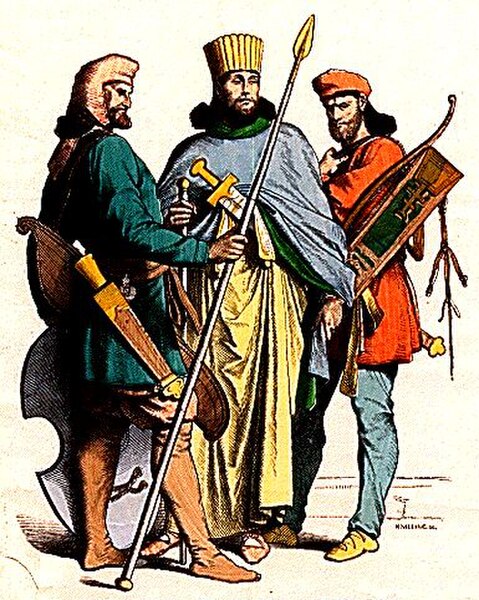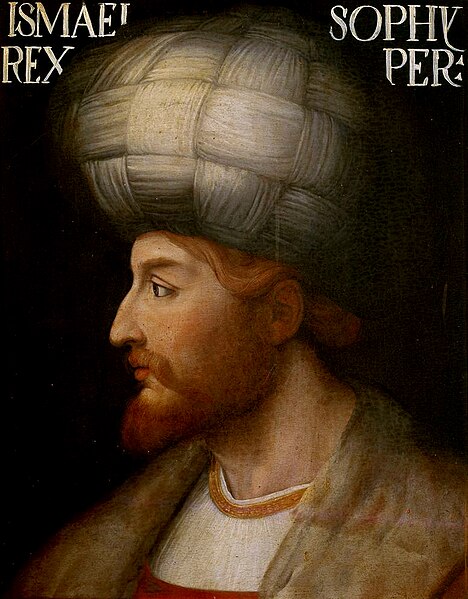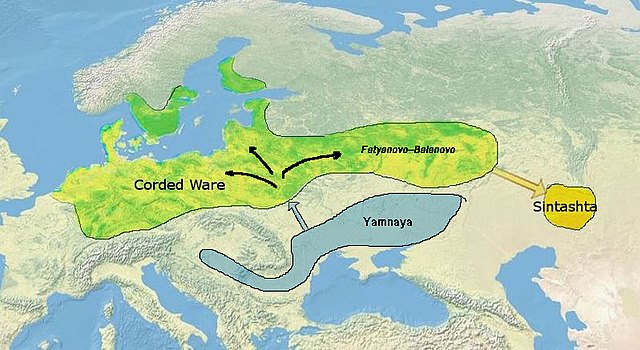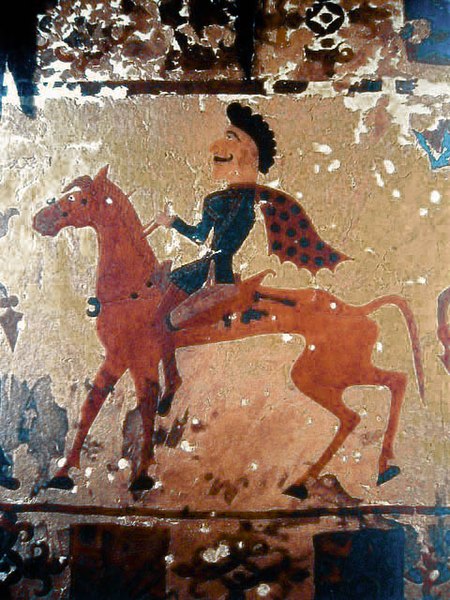The Persians are an Iranian ethnic group who comprise over half of the population of Iran. They share a common cultural system and are native speakers of the Persian language as well as of the languages that are closely related to Persian.
Ancient Persian attire worn by soldiers and a nobleman. The History of Costume by Braun & Scheider (1861–1880).
Ancient Persian and Greek soldiers as depicted on a color reconstruction of the 4th-century BC Alexander Sarcophagus.
A bas-relief at Naqsh-e Rustam depicting the victory of Sasanian ruler Shapur I over Roman ruler Valerian and Philip the Arab.
One of the first actions performed by Shāh Ismā'īl I of the Safavid dynasty was the proclamation of the Twelver denomination of Shīʿa Islam as the official religion of his newly founded Persian Empire.
The Iranian peoples or Iranic peoples are a diverse grouping of peoples who are identified by their usage of the Iranian languages and other cultural similarities.
The Bistun Inscription of Darius the Great describes itself to have been composed in Arya [language or script].
Early Indo-European migrations from the Pontic steppes and across Central Asia.
According to Allentoft (2015), the Sintashta culture probably derived from the Corded Ware culture.
Saka horseman, Pazyryk, from a carpet, c. 300 BC





![The Bistun Inscription of Darius the Great describes itself to have been composed in Arya [language or script].](https://upload.wikimedia.org/wikipedia/commons/thumb/0/04/Darius_I_the_Great%27s_inscription.jpg/640px-Darius_I_the_Great%27s_inscription.jpg)


